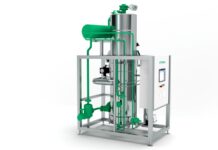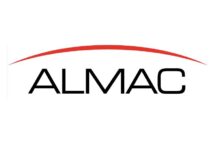The pharmaceutical manufacturing spectrum is going through a profound shift with contract development manufacturing organizations (CDMOs) transitioning from just being simple capacity providers to becoming strategic partners.
This shift comes as pharmaceutical companies face very intense pressure in order to decrease their costs and speed up their time to market while at the same time going through intricate regulatory requirements as well as supply chain susceptibilities, which have been exposed due to the COVID-19 pandemic and the more recent potential application of tariffs when it comes to the pharmaceutical sector.
Against the backdrop of transitioning R&D priorities for major pharmaceutical companies and challenging, sustained, and more concentrated fundraising set up within biotech start-ups, innovative CDMO partnership models are cropping up. There are private equity firms that have become dominant players within the CDMO sector, often helping the CDMO to counter more risk in the hopes of better long-term outcomes. At the same time, CDMOs are also making substantial capital investments in order to elevate their manufacturing capacities so as to meet the rising demand, especially emphasizing revolving modalities and unique services, such as fill and finish operations and also end-to-end manufacturing.
Let us now examine the five trends that are reshaping these relationships and also discover the legal frameworks that are required in order to support them within an ecosystem that is mature.
What are the emerging trends in CDMO partnership models?
-
Onshoring and Friendshoring
It is well to be noted that the pharmaceutical manufacturing spectrum is going through a significant shift towards onshoring as well as friendshoring since companies are reconsidering their global supply chain plans. The prospect when it comes to the BIOSECURE Act happens to be a major catalyst, which is pushing manufacturing away from certain CDMOs from China and towards facilities across the US as well as allied nations.
The potential application when it comes to tariffs in the pharmaceutical industry more recently has led companies to reconsider as well as look out for ways in order to minimize the cross-border aspect when it comes to supply chains. While the proposed tariff amounts when it comes to the pharmaceutical products have not been disclosed yet, the Bureau of Industry and Security (BIS) of the US Department of Commerce has started a national security investigation with regard to imports of pharmaceuticals, their ingredients, and the derivative products. All this includes both non-generic drug products, generic products, medical countermeasures, and critical inputs like active pharmaceutical ingredients, as well as key starting materials along with derivative products of those items. The BIS At present is looking out for comments that are relevant to the investigation.
It is worth noting that COVID-19 went on to expose critical weaknesses within the pharmaceutical supply chain, thereby pushing towards local production since companies went on to recognize that the geographic concentration goes on to create a systemic risk. The industry is now developing strategic system manufacturing capacities throughout global regions, thereby balancing localization requirements along with global reach and, at the same time, creating a more resilient supply chain. The rising emphasis when it comes to localized production may also decrease the effect of any kind of tariffs that are levied on the pharmaceutical sector, but the effect of tariffs may still be quite substantial for those companies that are depending on a single source of production of that relevant active pharmaceutical ingredient.
Accordingly, the global CDMO platforms having facilities that are strategically positioned throughout Asia, Europe, and North America are starting to become increasingly attractive to sponsors who are looking out for regional compliance as well as manufacturing redundancy.
-
Decrease the upfront costs with contingent success payments
It is worth noting that the CDMO financial model is evolving quite significantly as the private equity-backed companies are leading the way when it comes to adopting a more flexible payment option. By way of taking higher upfront risk when it comes to more favorable backend economics, these collaborations offer pharmaceutical companies the financial flexibility that they need while the CDMOs go ahead and secure the long-term commitment along with potential higher returns. In addition to this, the performance-based payment methods are mostly tied to certain milestones or achievements that are related to the batch volume, production efficiency, manufacturing speed, and scalability.
The market may also go on to see innovative royalty models emerge that have tiered product royalties, which are tied to products that are developed and manufactured successfully.
These kinds of royalty structures go on to sync priorities between pharmaceutical companies along with CDMOs and also create long-term value when it comes to CDMOs. Buyers, which acquire these organizations, not only gain secured customers but also get to have an established priority stream, thereby elevating their overall valuation as well as investment appeal.
All this will go on to change the financial modelling involved in pricing acquisitions, given that the buyers will require value for operating the business and also the potential future royalty streams along with intelligence involved in CDMO acquisitions.
-
Capital expenditures, when it comes to dedicated buildouts
It is well to be noted that the CDMO is broadening their manufacturing capacity in order to meet the surging industry demand but taking into account an innovative twist as compared to the traditional facility investment. They are increasingly passing the capital expenditure cost to customer partners by creating a shared investment model in order to decrease the risk for CDMO, but at the same time, making sure that a dedicated capacity along with a customized manufacturing capability for the client is maintained.
This kind of approach makes sure of manufacturing priority as well as operational efficiency, which is especially critical to time-sensitive development programs.
The capital sharing mostly has favorable economic terms, such as discounted pricing or production credits, thereby presenting a much deeper collaboration that goes on to sync the incentives, create a sustained value, and also elevate the customer retention.
At the end of the day, by way of retaining programs for early development right through commercial manufacturing, CDMOs happen to justify the larger capital investments and also avoid the risk and cost of transferring the technology to a different manufacturer during the process.
-
More stress when it comes to process development
Big Pharma is cutting internal research and development budgets, and early-stage biotech funding has surely become more concentrated and even selective. This is kind of creating a vacuum that the CDMOs are filling with outsourcing advantages, which are pretty well understood. Given that the CDMOs can offer established specific expertise along with efficiency capabilities to the customers, the R&D functions outsourcing to CDMO partners offers big pharma lower risk exposure as compared to maintaining the in-house capabilities or collaborating on these tasks with peers.
In addition to this, the forward-thinking CDMOs are also capitalizing on this kind of trend by way of offering proprietary technologies when it comes to product and process development by creating opportunities for more revenue streams, all through royalties along with contingent payments, and offering pharmaceutical partners the innovative resources that are valuable but, by the way, are no longer maintained internally.
This kind of expanded role goes on to represent a significant evolution for the industry, wherein the CDMOs are now going beyond just being their executives to becoming active participants when it comes to early-stage innovation as well as drug development strategy, which, by the way, further reinforces the payment structures that are evolving.
-
Fast track, partnership models
The competitive CDMO spectrum has made speed as well as efficiency when it comes to offering project initiation the decisive advantages. While intricate partnering arrangements can go on to create certain negotiation delays, companies are also executing streamlined preliminary agreements, which helps the work to begin even before finalizing the overall contracts and hence accelerates the revenue.
These early-stage arrangements go on to offer multiple strategic advantages – they help in establishing the customer relationships in an early stage by creating flexible payment timelines that help both parties and also open the opportunities for alternate pricing models.
Moreover, these preliminary agreements help both the sponsors as well as CDMOs to test drive their partnership, thereby evaluating functional compatibility along with communication effectiveness before going ahead and committing to longer-term arrangements. The result is obviously a faster project initiation while at the same time accommodating the intricate pattering structures that go on to characterize the relationship of modern CDMOs.
Legal framework in terms of evolving partnerships
As CDMO partnership models happen to grow more sophisticated, an effective and efficient legal framework must address numerous major considerations. Ownership when it comes to intellectual property will require to be clearly delineated as the CDMOs go on to participate in crucial product development work and, in many such cases, contribute their own proprietary technology in order to develop the product.
Then there are contractual agreements, which should include comprehensive provisions as far as contingent payments and capital sharing are concerned that address the success matrix.
Companies having geographically dispersed operations must go ahead and develop compliance frameworks that comprise numerous regulatory environments. Apart from these contractual agreements, which include royalty-like payment models must also address the intricate legal procedures in a more typical way, which are found in licenses as well as collaboration agreements.
The fast-track Initiation processes go on to demand balanced legal protection, which happens to maintain confidentiality and, at the same time, define the pre-contract IP rights without affecting the operational momentum. When it comes to the pharmaceutical companies, early involvement, as far as specialized legal expertise, enables creating a framework that safeguards the core assets while at the same time facilitating the flexibility that is required for successful partnership.
All these CDMO trends happen to suggest an evolution that is moving towards collaborative business relationships within pharmaceutical manufacturing and the rising importance of CDMO in the pharmaceutical value creation effort. This kind of gradual transition is going to create opportunities for every side to align incentives in a more effective way, thereby potentially enhancing the efficiency while, at the same time, distributing both opportunities along with challenges in an evenly spread-out way throughout the development of drugs and manufacturing process.




















